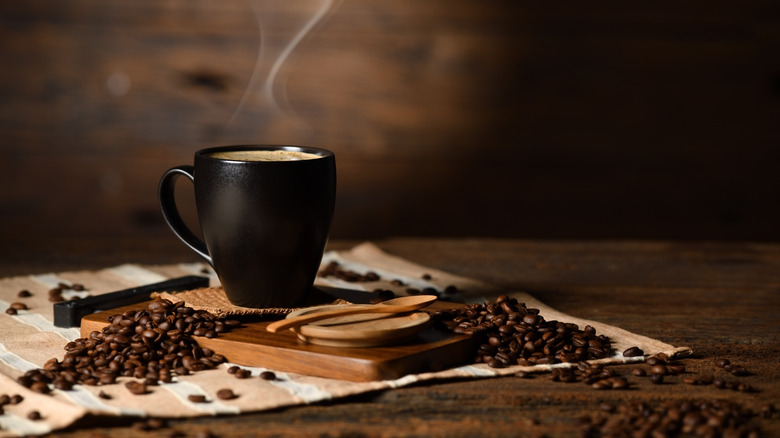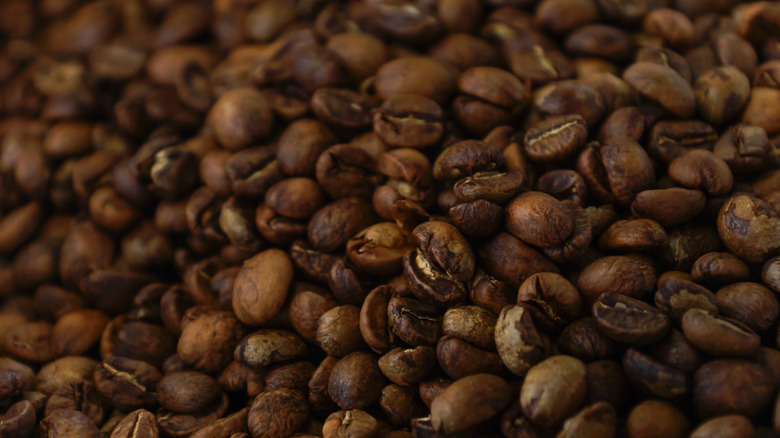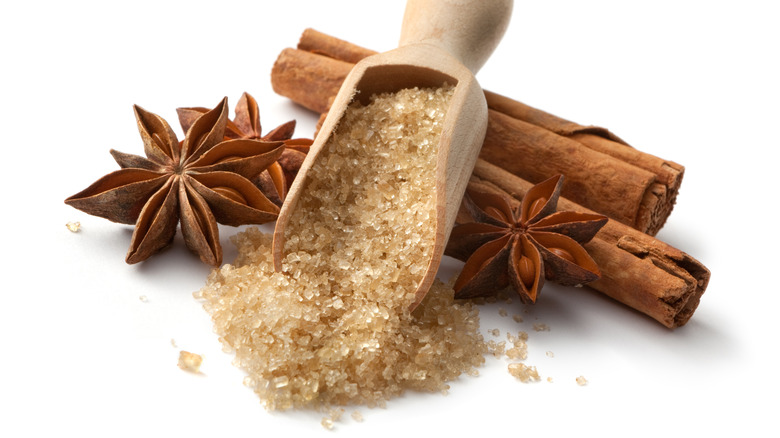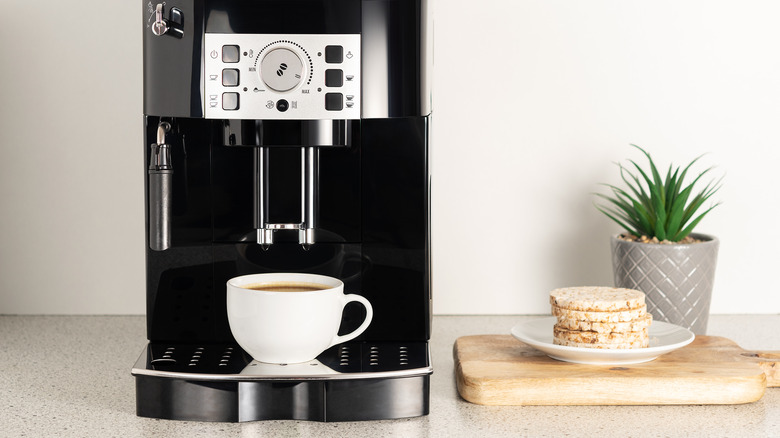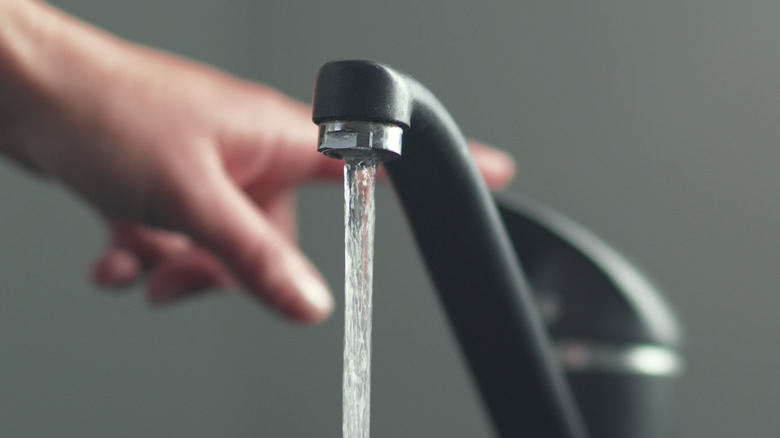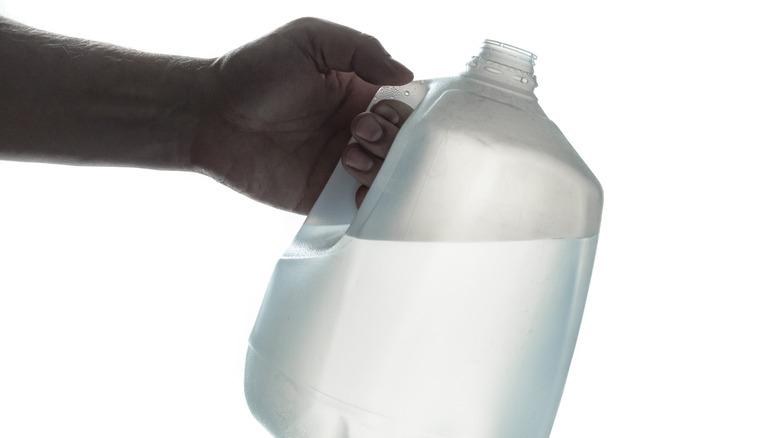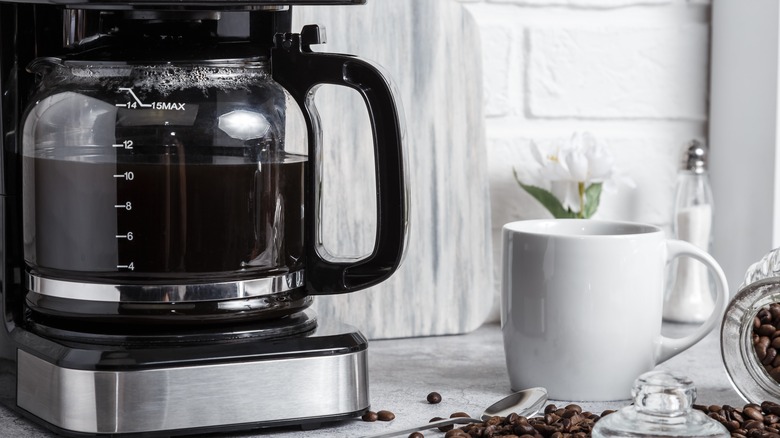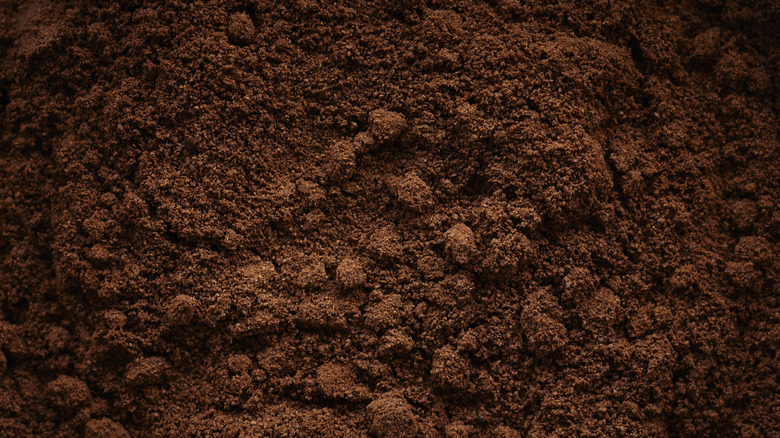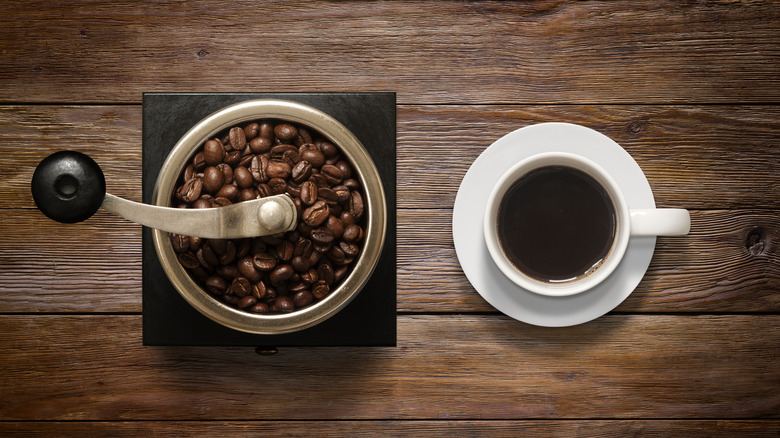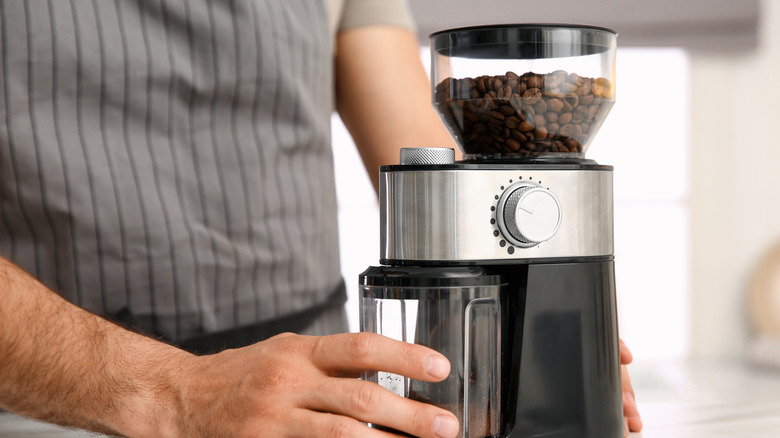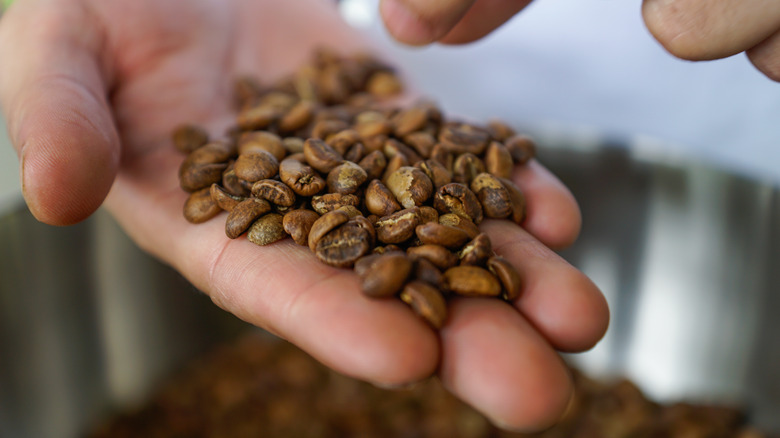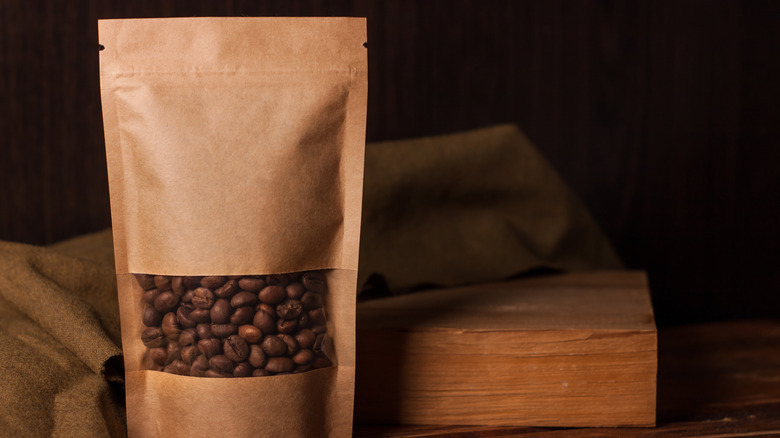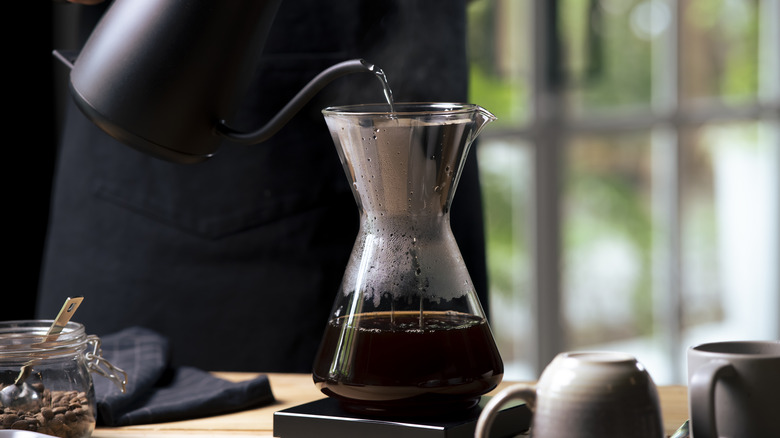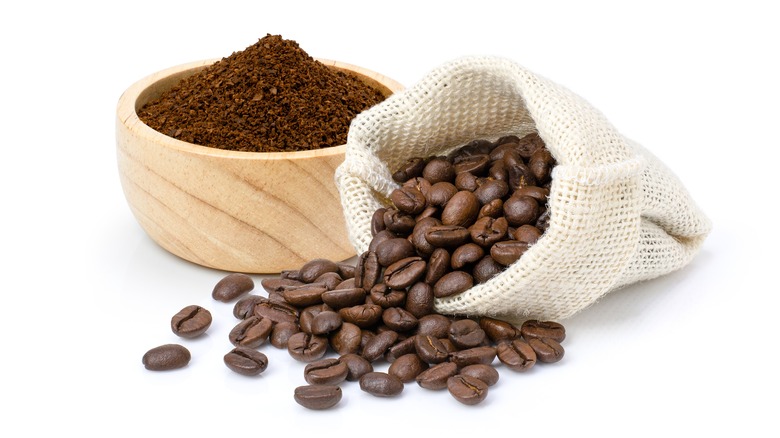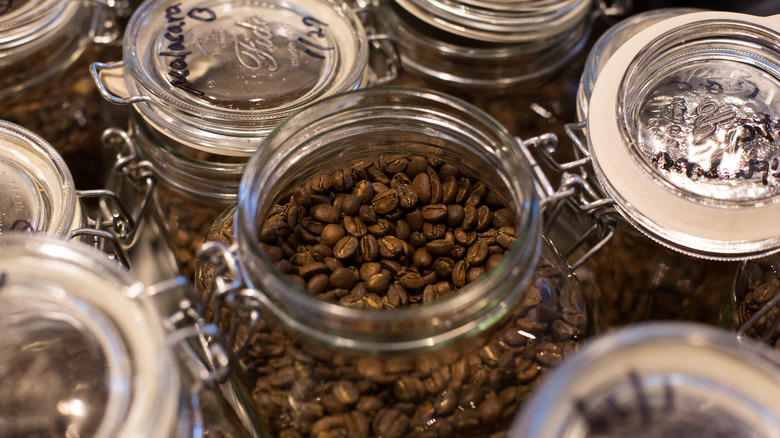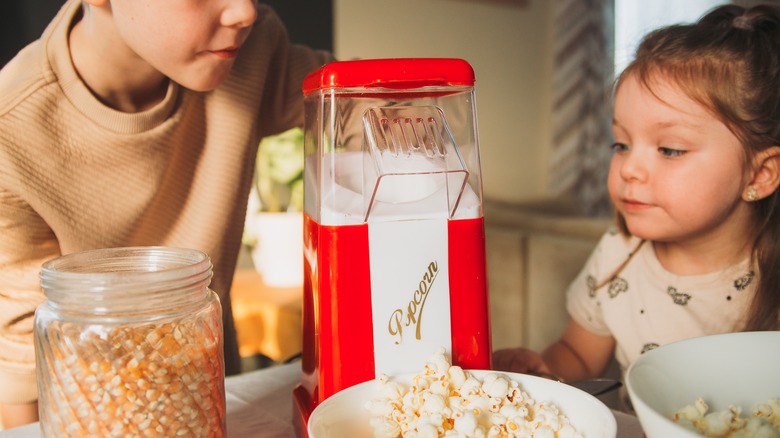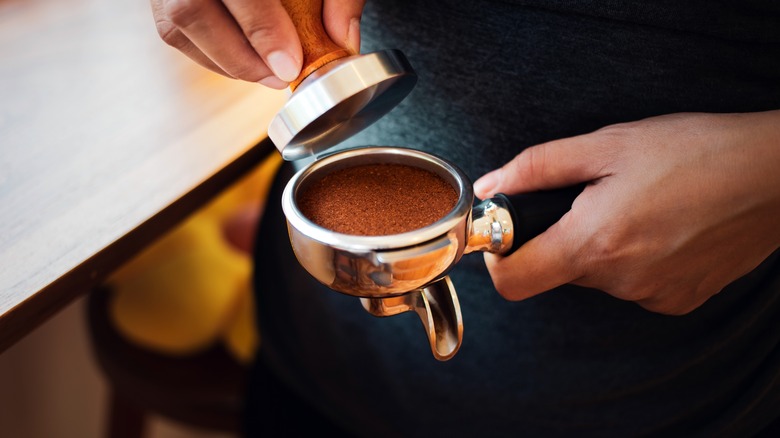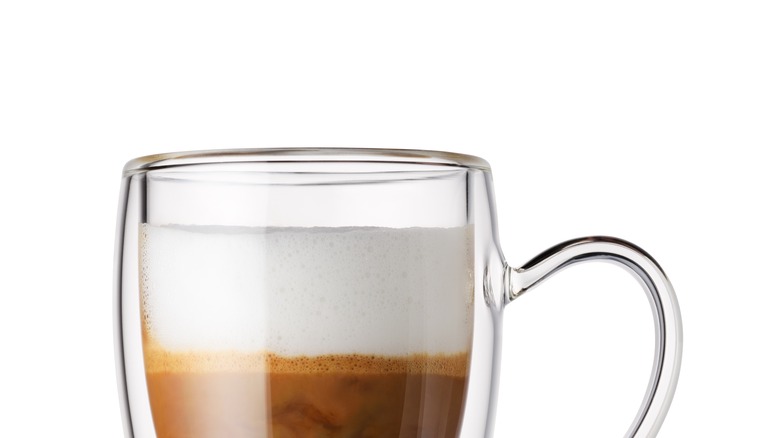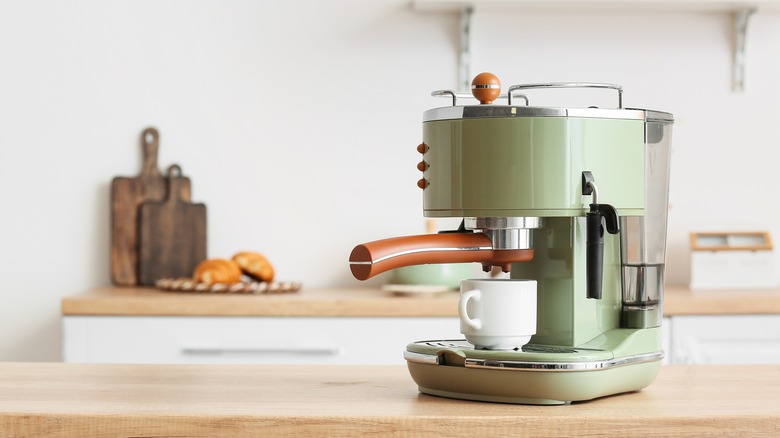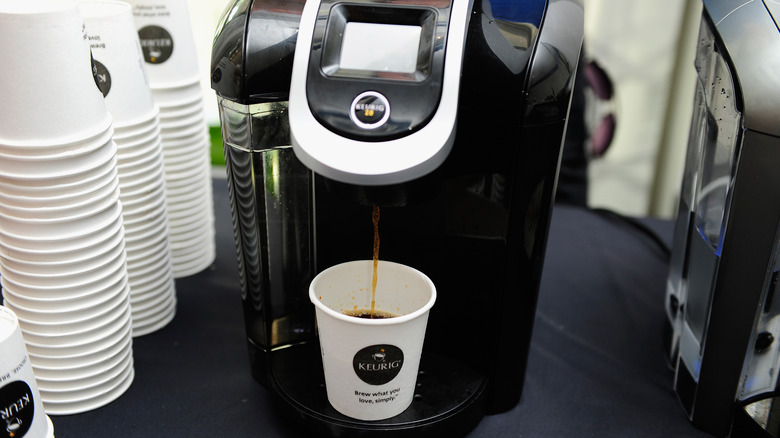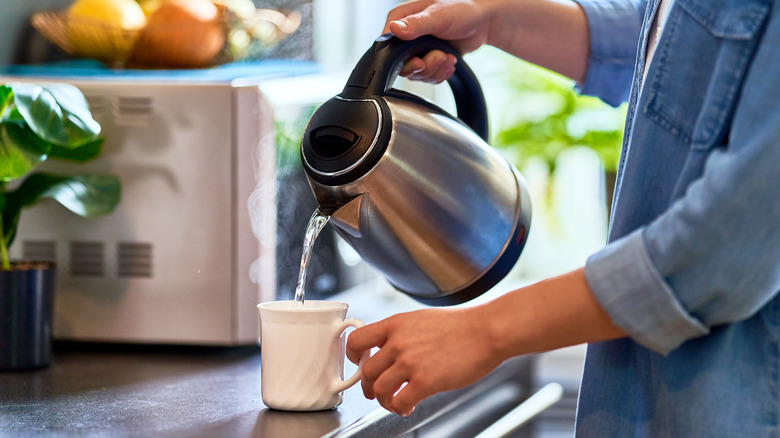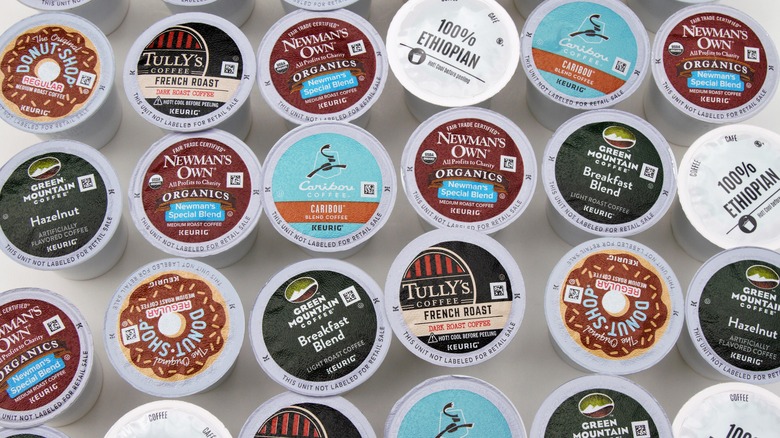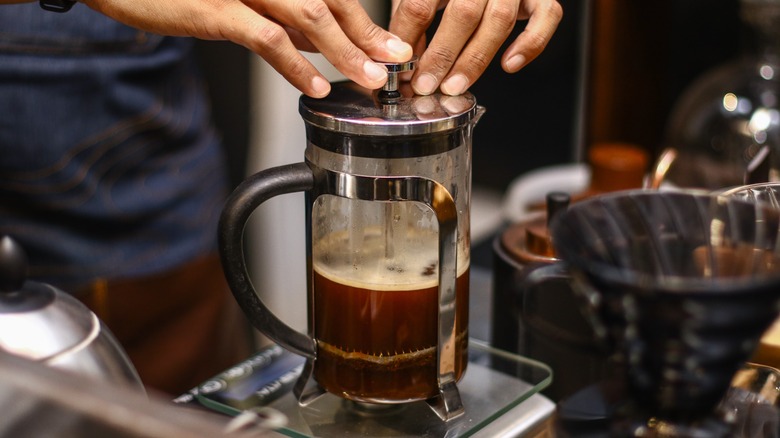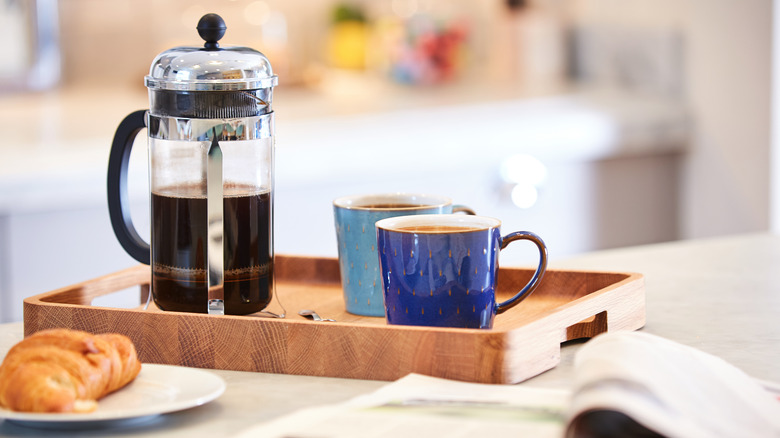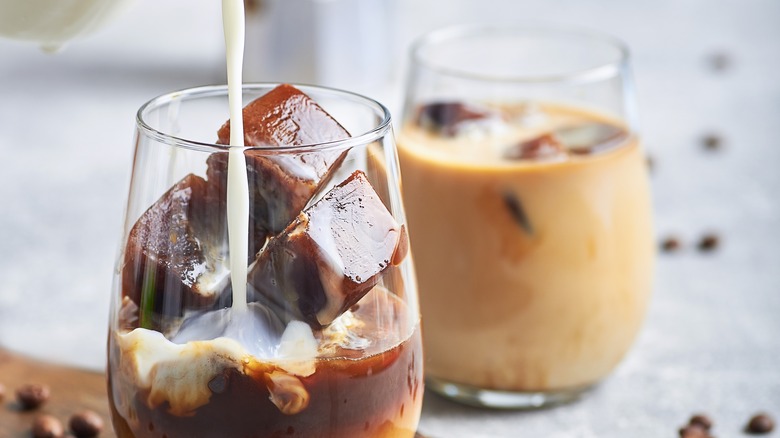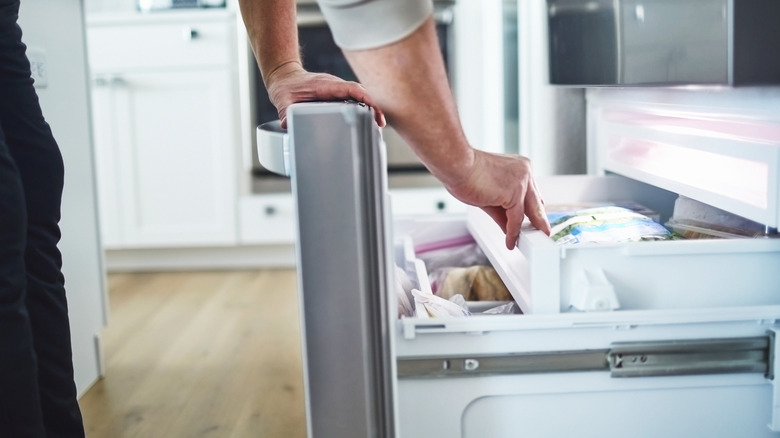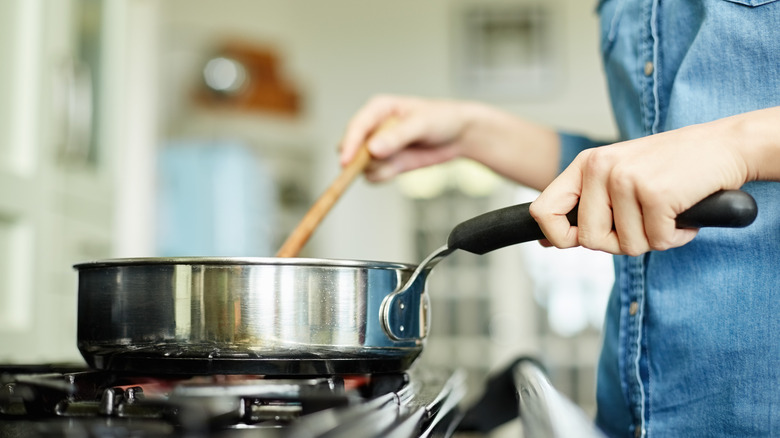26 Coffee Hacks You Need To Know For A Better Cup
Can't you just smell it? The maker of mornings, the awakener of senses — coffee is the ever-reliable caffeinated cure that keeps us moving through the day. You can trace it back to Ethiopia, where, according to the National Coffee Association, a goat herder named Kaldi is said to have discovered coffee after observing his goats' strange reaction to caffeine. After consuming berries from a curious tree, they'd stay active late into the night. Kaldi took the berries to a monk from a local monastery who decided to brew a drink using them. Like the goats, the monk noticed enhanced alertness during his nightly prayers too.
Since those early days, coffee has evolved greatly, even developing into science. Coffee fans represent a wide range of tastes, styles, and preferences, yet all share one thing in common: a love for a quality cup of joe. A good cup of coffee can mean the difference between an awesome morning and a so-so one. Depending on the brew style, getting the specifics down can get tricky. That's why we compiled a list of coffee hacks to help you brew a better cup. Whether a straightforward Americana or a fanciful French press, here are some tips to wake you up.
Buy quality coffee beans for quality coffee
It goes without saying that quality coffee beans equals quality coffee. Understandably, budgets and busy schedules can lead one to compromise on quality, but just know that the coffee of your dreams is always within reach, and you don't have to break the bank to enjoy it. There are signs that indicate a great coffee. One indicator to look for is oiliness, which means the bean has been over-roasted. The beans should be crack and blemish-free. Check the package for how the beans are sourced — reputable coffee brands typically have special certifications.
Add sugar and spices to your coffee grounds
Don't you just love humankind's penchant for experimenting with flavors? Shout out to whoever discovered the magic that mixing sugar and spices into coffee conjures. For example, one simple trick to add flavor is to sprinkle some cinnamon into your coffee grounds. It'll add a touch of sweet woodsiness to your brew, intensifying the flavor. Similarly, aromatic spices like nutmeg and anise offer interesting notes too. Try adding sugar for additional sweetness. For the truly experimental, test out oil extracts, ginger, and even lemon zest. It takes some trial and error to find the right flavor for you — but for a better cup, it's totally worth it.
Fold your filter along the lines
In a perfect world, every morning would begin with the smell of freshly brewed coffee. Sadly, since robot assistants aren't a thing yet, coffee doesn't brew itself. A collapsing coffee filter can be annoying to deal with when you're navigating a hazy morning. Even this seemingly minor step towards a jolting sip of joe is important, and fortunately, there's a trick for preventing coffee filters from collapsing. You simply fold and load filters along the ridge lines on the bottom and side. The textured lines are made to fit perfectly into the coffee maker without falling over.
Rinse your coffee filter with hot water first
It's the little things we overlook that make a difference in how something tastes. That's certainly true of coffee, which can go from delicious to disastrous simply by using the filter incorrectly. One unlikely extra step for better-tasting home-brewed coffee is to rinse your filter with hot water before using it. You might think, "Doesn't brewing essentially rinse the filter with hot water too?" The reason for rinsing is to ensure optimal coffee extraction. A pre-soak will help filter water through cleanly and also removes the filter's papery taste.
Filtered water brings out more flavor
From the beans you choose to the water you use, each ingredient can alter the experience. As delicious as coffee is, it's really only as tasty as the water used to brew it. Murky tap water results in cloudy coffee, which is why baristas recommend using distilled water. That's also why coffee tastes better at a cafe than it does at home. Minerals can also be added to distilled water that gives your coffee a unique flavor, along with providing added health benefits. For example, quality coffee-brewing water contains magnesium and calcium. Magnesium helps extract "eugenol," which produces brighter notes, and calcium helps highlight darker nuances.
Brew coffee water at the right temperature
Depending on the method of brewing, your water needs to reach a certain temperature for best results. While a traditional drip machine takes cold water, if you prefer a French press-style brew, the ideal temperature is 195 degrees Fahrenheit. If you've been using boiling water, that's definitely one coffee mistake you're making at home. Caffeine lovers may literally keep a thermometer on hand just for situations like these. According to Homegrounds, 195 degrees Fahrenheit is also ideal for making espresso, but to brew a perfect cappuccino, you'll need your water between 195 to 212 degrees Fahrenheit.
Avoid pre-ground beans for maximum flavor
When maximum and flavor are used to describe something, you know you're in for a real treat. An easy-to-overlook hack that will ensure a more satisfying experience when brewing coffee at home is to avoid using pre-ground beans. Think of the coffee bean as a safe haven for everything you love — it's the great protector of flavor. After it's ground, the taste begins to gradually dissipate. On top of that, pre-ground beans are packaged, shipped, and stocked on a shelf before they get to you. That's why for a better cup, we recommend grinding your own beans.
Choose the right grinder for your beans
From the look of the bean to the water temperature used to brew it, and the type of water itself, there's a lot that goes into making a better cup of coffee. For example, choosing the right coffee grinder can prevent unnecessary mistakes. Quality blades are key — they're better at evenly grinding the beans, which brings out a fresher taste. Multi-bladed grinders are superior and will offer more refined results. Another benefit to small coffee grounds is reduced acidity, commonly produced from uneven pieces. Take it from us: A well-made coffee grinder is worth the investment.
Grind right before brewing
When it comes to coffee, the grind never stops. Cheesy tagline aside, once you have a trustworthy coffee grinder, it's important to know when to put it to work. For a better-tasting cup of joe, it's recommended that you only grind right before you're about to brew. Beans begin to lose their appeal immediately once they're ground because oxidation exposes them to air, allowing oils and aromatics (i.e. the good stuff) to escape. You'll definitely notice baristas take this same exact approach on your next cafe run, and when it comes to beans, baristas know best.
Measure coffee beans for better taste
At its best, the sweet science of coffee making requires careful consideration at every step in the process. The wrong water temperature will affect taste just as easily as the quality of the beans you use. Adding to coffee's long list of essential hacks is knowing the ideal ratio of coffee beans to water. While seasoned sippers can probably wing the brewing process without issue, any experience or lack thereof shouldn't keep you from considering this simple hack: Measure your coffee beans. Simply put, doing so will result in better taste and reduce unnecessary waste.
Brew within three months of the roast date
Timing is of the utmost importance when it comes to coffee. The slightest over or under-measurement can alter desired outcomes. After you've figured out how to pinpoint a quality bean, another indicator to look for is the roast date. The roast date is when the beans were roasted. If you don't see the roast date on the package, it's a clear sign to run for the hills. We recommend that you purchase beans only three months removed from the roast date. It's a brewing tip sure to give you a stronger cup of coffee.
Use the right coffee-to-water ratio
Another part of the coffee-making process to keep in mind is your coffee-to-water ratio. Too little coffee equals a watery morning whereas too much can make for a bitter breakfast. According to NBC News, for traditional coffee makers, 20 grams per 10 ounces of water is the delicious coffee equation you've been looking for. Considering, 20 grams is roughly four teaspoons and 10 ounces is a standard-sized coffee mug. Preference and a little patience definitely play a part here, so that's why we suggest testing out various ratios to see which ones excite your palate.
Adjust grind size to reduce bitterness
Although bitterness can add to coffee's complex flavor profile, too much will sour the experience. Thankfully, bitterness can be controlled and balanced to a level of your liking. When you're getting your grind on, according to WikiHow, it's important to be mindful of how fine the grounds become. Bitterness is directly related to grind size, and the size will vary depending on what type of coffee you brew. Coarse ground is best for French presses while medium fine works best for drip coffee. Run a quick Google for the size best suited to your brew method.
Ensure freshness with proper coffee storage
How you store coffee can lead you astray, or to the promised land. There's nothing worse than waking to groggily retrieve your coffee beans, only to find they've grown stale. To avoid that frightening experience, the absolute best ways to keep coffee beans fresh are to store them at room temperature in an airtight container, in their original packaging, or in the freezer. Exposure to the elements spells certain death for coffee beans. And of course, the original package is great because that's what it was made for. You can also freeze some for future enjoyment.
Roast your beans at home with a popcorn maker
You know, sometimes you just have to have coffee by any means necessary. This next hack is definitely proof of that because whoever invented using a popcorn maker to roast beans must've faced dire circumstances. But the design of popcorn poppers is actually perfect for roasting coffee beans. Its shape allows you to move the beans around, which lets them roast more evenly. While we won't go so far as to suggest replacing your coffee maker, we definitely recommend giving this fun hack a try. Sometimes the most unexpected things yield the most exciting surprises.
Tamp your grounds evenly for better espresso
If there's anything to keep in mind when making coffee, it's that quality brewing requires proper measurement and even distribution. Different from the drip variety, the method for making espresso comes with its own set of rules. One particular rule of thumb has to do with tamping. Tamping is the act of pushing down the coffee ground until it's dense and compact. Inconsistent tamping is an espresso mistake you should never make at home that can cause spikes in bitterness and sourness. You should apply between 20 and 30 pounds of pressure to the tamp. The grounds should only reach as high as the basket's rim.
Remove excess crema to avoid bitter espressos
A punch of espresso will kick your day into high gear, but en route to coffee heaven, there are some roadblocks to steer clear of. Resting comfortably atop your beverage of deliciousness is a layer of brown foam called "crema." Crema is a mixture of fats and oils that coffee naturally produces, along with microbubbles of carbon dioxide (CO2). According to MokaFlor, crema was originally coined in 1938. Over the years "caffè creme" became as synonymous with espresso as overwhelming bursts of energy. The downside is increased bitterness, which is why many suggest scooping the crema out for a better cup of espresso.
Always clean your coffee maker
Cleanliness is next to coffee-ness, er ... something like that. This next hack probably goes without sharing, but a great way to upgrade your morning coffee is to simply make sure to clean your coffee maker. Allowing your caffeine machine to go long periods without cleaning can produce bitter and funky coffee. In fact, if your coffee has a rank taste, that's probably a sign it's due for a cleaning. Coffee oils and mineral sediment also accumulate over time and disrupt the brewing process. And of course, we can't forget those pesky little beings called germs.
Lower the brew size of your Keurig
Keurig revolutionized the coffee game with its streamlined approach to brewing. A small cup gives you a big cup. There is a caveat though — you absolutely must be mindful of the amount of water you use. Keurig cups are the equivalent of one to two tablespoons of ground, which only requires six ounces of water. If you use too much, then your taste buds will be swimming in watery disappointment. That's why we suggest lowering the brew size of your Keurig to get more flavor out of the coffee pods. You can also double pod it up for stronger results.
Heat your water up before brewing Keurig cups
Convenience comes with its downside — what you make up for in time, you may lose out on quality. The same can be said for Keurig machines, which certainly get the job done, albeit with some short changes in taste. One extra step you need to take before brewing your Keurig is to heat up your water. It may seem counterintuitive, but warming your water before pouring it into the sink can help produce tastier coffee. There are two reasons why: The first is that dark roast beans require hotter water for extraction, and the other is that coffee loses its flavor as it cools. It helps bring more flavor out of the Keurig, giving you an overall better cup.
Remove Keurig cups to avoid watery coffee
The Keurig cult followers are probably familiar with this next hack, but did you know that you can avoid watery coffee by removing the cup? As the Keurig gets closer to finishing its brew cycle, it releases leftover coffee liquid that's watery and bitter-tasting. That's why the working theory is to remove the Keurig cup before it releases those last bitter bits into your chalice of caffeine. If you keep a close watch, you'll be able to better time when the actual coffee stops and the watery remnants creep out to ruin your day.
Allow 18 hours for steeping your cold brew
Coffee pairs great with every season. A steaming cup of joe might be the most popular way to consume it, but when the temperature rises and the sun decides to stay out longer — a hot brew is the last thing you want. Good thing it's pretty easy to make homemade cold brew, albeit with a little patience. It takes longer for the flavors to surface in cold brew because it's steeped at room temperature, according to the Joe's, 18 hours to be exact. That should be enough time to properly extract deliciousness.
Use a French press to make a cold brew
Cold brew lovers will love this next nifty hack. A French press is a perfectly suitable substitute for a cold brew maker, the main differences are water temperature and the time it takes to brew. There's also an additional step to take that will ensure the beverage you desire. After filling your French press, and before actually pressing it, store it inside the fridge away from light. After 18 hours or more, press the plunger tool down. We recommend using two filters, which will help prevent coarse grounds from falling in.
Freeze leftover brew for coffee ice cubes
Real-deal coffee connoisseurs will no doubt enjoy this next hack. If you're guilty of brewing more coffee than you drink, raise your hand. There are only so many times you can reheat the same pot before the coffee tastes of burnt beans. One useful solution to avoid wasting leftover brew is to make coffee ice cubes. It's a quick and easy brewing trick for iced coffee and you're probably smacking yourself in the forehead for not trying sooner. You literally just pour the caffeinated remnants into an ice cube tray, let it freeze overnight, and just like that, "Hello world!"
Freeze coffee beans for a more consistent grind
Ever heard the phrase, "Consistency is key?" Well, it applies to coffee too. Inconsistent coffee grounds can be an acidic and bitter pill to swallow. When the grounds are fine particles, you'll extract bitterness, and when it's coarse, you'll get higher levels of acidity. Luckily, there's a "cool" hack for achieving a more consistent grind: freezing your coffee beans. According to a study from Scientific Reports, when a bean is chilled it grinds down into more uniformly-sized particles, which produces fuller flavor. You just gotta make sure that you store them in an airtight container.
Reheat coffee on a stovetop to reduce staleness
The thing about making a big pot of coffee is that you end up having to reheat it every time you need a refill, which progressively reduces its freshly brewed taste. Well, just like every aspect of the brewing process, there's even a nifty hack for reheating coffee. While many of us might settle for the boost of energy a bland cup of microwaved coffee will provide, you can avoid that entirely by using the stovetop. Reheating it on low will help retain its "first sip" flavor. It's really that simple, all you need is a bit of extra patience.
